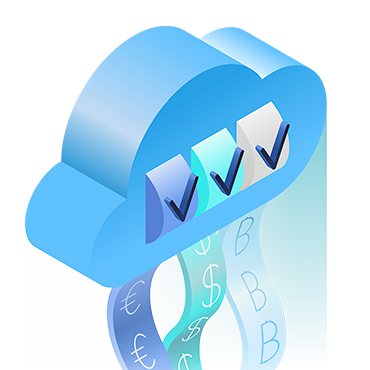What is a Cloud Service Provider?
Updated 11 Jul 2024
The term “cloud service provider” has become ubiquitous. But what exactly is a cloud service provider, and why are they integral to modern business operations? This article will delve into the concept, functionality, and benefits of cloud service providers, with a focus on how they support businesses in leveraging cloud computing.
Understanding Cloud Service Providers
A cloud service provider (CSP) is a company that offers a range of cloud-based services, such as storage, computing power, and applications, over the internet. These services enable businesses to access and utilize resources without the need to maintain physical infrastructure. Major cloud providers include Amazon Web Services (AWS), Microsoft Azure, and Google Cloud Platform (GCP).
Core Offerings
Infrastructure as a Service (IaaS):
Provides virtualized computing resources over the internet. IaaS is beneficial for companies needing to build and manage their virtual environments while maintaining control over the infrastructure. Examples include virtual machines, storage, and networks.
- Description: IaaS offers virtualized computing resources over the internet. This includes virtual machines (VMs), storage, and networking capabilities.
- Benefits: Businesses can scale resources up or down based on demand, reducing the need for large upfront capital expenditures on physical infrastructure. It provides flexibility and ease of management, allowing IT teams to focus on other strategic tasks.
- Examples: Amazon Web Services (AWS) EC2, Google Compute Engine (GCE), and Microsoft Azure VMs.
Platform as a Service (PaaS):
Offers a platform allowing customers to develop, run, and manage applications without dealing with the infrastructure. PaaS simplifies the development process, enabling developers to focus on coding and deployment.
- Description: PaaS provides a platform allowing customers to develop, run, and manage applications without dealing with the underlying infrastructure. It includes operating systems, middleware, and development tools.
- Benefits: Simplifies the development process by offering pre-configured environments. Developers can focus on building applications without worrying about hardware and software management.
- Examples: Google App Engine, Microsoft Azure App Service, and AWS Elastic Beanstalk.
Software as a Service (SaaS):
Delivers software applications over the internet on a subscription basis. SaaS eliminates the need for installations and maintenance, providing accessibility from any device with internet connectivity.
- Description: SaaS delivers software applications over the internet on a subscription basis. These applications are hosted and managed by the CSP, making them accessible from any device with internet connectivity.
- Benefits: Eliminates the need for installations and maintenance. It offers accessibility, automatic updates, and scalability.
- Examples: Salesforce, Google Workspace, and Microsoft Office 365.
Key Benefits
Scalability: Cloud services can be easily scaled up or down based on demand, ensuring optimal resource utilization.
Cost-Effectiveness: By leveraging cloud services, businesses can reduce capital expenditures on physical infrastructure and only pay for what they use.
Accessibility: Cloud services offer remote access to applications and data, facilitating remote work and collaboration.
Security: Leading CSPs invest heavily in security measures, ensuring data protection and compliance with regulations.
The Role of Managed Services
Managed services in the cloud ecosystem are essential for optimizing and securing cloud operations. These services, provided by cloud service providers, encompass a variety of functions such as automated scaling, continuous monitoring, security management, and disaster recovery. By offloading these responsibilities to the cloud provider, businesses can concentrate on their core competencies and strategic initiatives, leading to improved efficiency and innovation.
Key Components of Managed Services
1. Automated Scaling:
Description: Automated scaling allows cloud resources to adjust dynamically based on current demand. This means that during peak usage times, the system will automatically allocate additional resources to handle the load, and during low usage times, it will scale down to save costs.
Benefits: This flexibility ensures optimal performance and cost-efficiency. Businesses no longer need to worry about manual adjustments, which can be time-consuming and prone to errors.
2. Continuous Monitoring:
Description: Continuous monitoring involves real-time tracking of cloud resources and applications. This includes monitoring performance metrics, resource utilization, and detecting anomalies that could indicate potential issues.
Benefits: Continuous monitoring ensures that any performance degradation or security threats are detected and addressed promptly, minimizing downtime and ensuring smooth operation.
3. Security Management:
Description: Security management includes a range of services designed to protect cloud infrastructure and data. This can involve identity and access management (IAM), encryption, intrusion detection and prevention systems (IDPS), and compliance with security standards.
Benefits: By leveraging advanced security measures provided by CSPs, businesses can ensure that their data is protected against breaches and cyber threats. This is especially crucial for industries with stringent regulatory requirements.
4. Disaster Recovery:
Description: Disaster recovery services ensure that businesses can quickly recover their data and applications in the event of a disaster. This includes regular backups, data replication, and the ability to failover to secondary systems.
Benefits: Disaster recovery services provide peace of mind, knowing that critical data and applications are safeguarded against unexpected events such as natural disasters, cyber-attacks, or hardware failures.
Choosing the Right Cloud Service Provider
Selecting the appropriate cloud provider is critical and should be driven by the specific needs of the business. Factors to consider include:
- Service Offerings: Ensure the provider offers the necessary services to support your business objectives.
- Security and Compliance: Evaluate the provider’s security protocols and compliance with industry regulations.
- Cost Structure: Understand the pricing model and ensure it aligns with your budget and usage patterns.
- Support and Reliability: Assess the provider’s customer support and service reliability, including uptime guarantees.
Migration and Management
Migrating to a cloud provider involves transferring data, applications, and other business elements from on-premises infrastructure to the cloud. This process requires careful planning and execution to avoid disruptions. Post-migration, businesses should adopt best practices for maintaining and optimizing their cloud-based environments, such as regular performance monitoring, implementing automated backups, and optimizing data flow for cost efficiency.
Hybrid Cloud Solutions
For some businesses, a hybrid cloud approach that combines public and private clouds can offer the best of both worlds. Hybrid cloud solutions provide flexibility, enhanced security, and compliance with regional regulations. This model allows businesses to keep sensitive data on-premises while leveraging the scalability and cost benefits of the public cloud.
Conclusion
A cloud service provider is essential for modern businesses looking to leverage the benefits of cloud computing. By understanding the different types of cloud services and carefully selecting the right provider, businesses can achieve significant improvements in scalability, cost-efficiency, and security. Ostride Labs is committed to supporting businesses in their cloud journey, providing expert guidance and tailored solutions to ensure a seamless transition and ongoing optimization of cloud environments.
For more information on how Ostride Labs can assist with your cloud needs, contact us for a free consultation.



